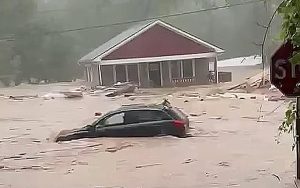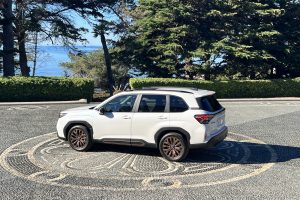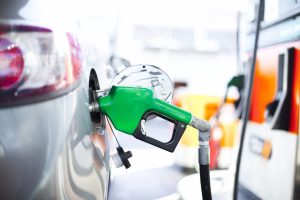Back-to-back hurricanes contributed to the staggering total of almost 347,000 flood-damaged vehicles on the East Coast of the U.S. Hurricanes Milton and Helene damaged scores of vehicles with flood waters and other problems. Add those to the thousands of other water-damaged vehicles from other smaller storms this summer, it doesn’t take much to see how this can become a massive problem.

Hurricane Helene has caused billions in damages in the Southeast U.S., notably in Florida’s Big Bend and the mountains of NC, GA and TN.
Now as survivors are picking up the pieces of their lives after the storms, they’re sorting out what to do with their vehicles. Are they viable? What will it cost? How do I do it? The National Highway Traffic Safety Administration encourages owners to do a thorough assessment of your vehicle before starting it. That alone could save you thousands of dollars.
Owners fixing their vehicles is only part of the problem. As the owners of these cars, trucks, and utility vehicles begin to get their vehicles back on the roads, many will simply say “no thanks” and look to make them someone else’s problem — perhaps you.
This is the most destructive year for hurricanes and storms in the U.S. since Hurricane Ian swamped as many as 358,000 vehicles across several states back in 2022, according to CarFax estimates. Water damage can cause costly mechanical and electrical issues and even pose risks to health and safety.
Start at the beginning
 If you own a flood-damaged car, make a careful assessment. Find out how much its going to cost to repair it. Also know that if you’re insurance gives you a tough time, there may be other resources you can tap.
If you own a flood-damaged car, make a careful assessment. Find out how much its going to cost to repair it. Also know that if you’re insurance gives you a tough time, there may be other resources you can tap.
FEMA provides financial help after a disaster for eligible expenses not paid by insurance or other sources. This may include repair or replacement of a vehicle. The damage to the vehicle must have been caused by the disaster and the vehicle must no longer be operable or safe to drive. Cosmetic repairs will not be covered. Other conditions include:
- Assistance is usually limited to one vehicle. If there is a second functional vehicle in the household, the applicant must certify in writing that the damaged vehicle is essential for household’s daily use.
- The vehicle must comply with state registration and insurance requirements.
- The vehicle must be owned or leased (not a rental) by the applicant, co-applicant, or household member.
- The damaged vehicle must be an approved vehicle type, such as a car, truck, SUV or van.
Go to disasterassistance.gov to find out if your vehicle might be eligible. Also, all the FEMA helpline at 800-621-3362 between 6 a.m. and 10 p.m.
More Hurricane Stories
- Used Car Buyers Beware: Hurricane Helene Could Flood Market with Water-Damaged Vehicles
- Hurricane Helene Could Trigger Another Major Semiconductor Shortage
- Forget Hurricane Milton, Car Buyers Are Underwater All Over the Country
May not be over
Hurricane season is roughly May to November — roughly. And while we’ve had several tropical storms and hurricanes, there is nothing that says the season ends on Nov. 1. Mother Nature’s calendar is nothing if not imprecise.
First of all, the two most recent storms caused an estimated $470 billion combined, according to AccuWeather. Just days after unleashing a staggering 42 trillion gallons of rainfall — enough to fill Lake Tahoe — Helene was confirmed as the second-deadliest hurricane to strike the U.S. mainland in 50 years.
“As we move into early November, the focus for tropical development shifts closer to the United States. Typically, the areas of focus late in the season are the Caribbean and off the Southeast coast,” said AccuWeather Lead Hurricane Expert Alex DaSilva.
In fact, there are still six names left that can be used for future hurricanes: Patty, Rafael, Sara, Tony, Valerie and William. If more come after, they use numbers. In short, the number of affected vehicles could still rise substantially.





0 Comments